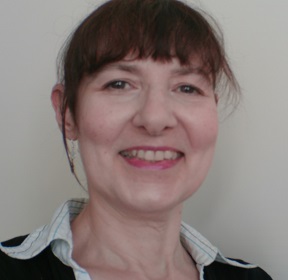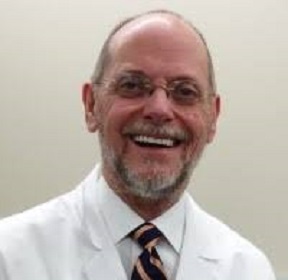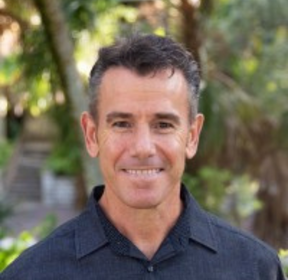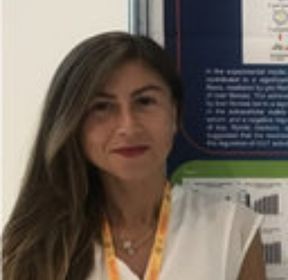Keynote Forum

Holly E Mullin
Founder, Awakening Medicine – Radical Health Training Program United KingdomTitle: Radical Health and Holistic Detox: Awakening Medicine for Optimal Living
Abstract:
Holly E. Mullin is a seasoned detox expert, lifestyle coach, and healthcare director with over 25 years of experience in holistic health and complementary medicine. Since beginning her studies in 1995, she has specialized in the detox industry for 16 years, running her own successful retreat and later a health farm, Breathe Detox, for 12 years until 2019. Holly has trained extensively in a wide range of therapies, including Ayurvedic Massage, Rebirthing Breathwork, Spinal Touch, Cranio-Sacral Therapy, Creative Kinesiology, and more. She is also the creator of the Awakening Medicine program, a 21-day Radical Health training designed to guide individuals toward vibrant health, innate wisdom, and untapped potential. As a passionate advocate of Radical Health, Holly inspires global audiences to embrace detox practices, holistic healing, and the restoration of natural vitality.
Biography:
Holly E. Mullin is a detox expert, lifestyle coach and health care director. She has been studying holisitc health and complimentary medicine since 1995 and has worked as an alternative therapist for 25 years, specialsing in the detox industry for 16 years. She ran her own successful detox retreat and most recently as a health farm, Breathe Detox, for 12 years until it was shut down as a result of the pandemic in 2019. She has a wide range of therapies and has continued her studies since 1996 which include: MTI 1997, Ayuervedic Massage 2003, Rebirthing Breathwork 2005, Spinal Touch 2006, Bio-Stress Release 2007, Cranio-Sacral Therapy 2009, Touch for Health 2010, Creative Kinesiology 2012, Body De-Armouring 2013. As well as an array of CPD courses in everything from Shiatsu & Hypnotherapy to Natural Nutrtion & Body Harmony. She most recently developed her own 3 week Radical Health training programme: Awakening Medicine - 21 days to be a Naked Guru. She is a Radical Health advocate and inspirational speaker encouraging people back to optimal health, innate wisdom, radiant beauty and untapped potential as a natural man or woman.

Suzanne B Zacharia
EFT Practitioner & Wellness Blogger United KingdomTitle: EFT for Chronic Disease: Bridging Gaps in Conventional Treatment
Abstract:
Suzanne Zacharia is an Emotional Freedom Techniques (EFT/Tapping) practitioner with specialized expertise in supporting individuals living with chronic disease. Her professional journey is deeply rooted in her personal experience of overcoming the challenges of COPD, which began at the age of 26. This search for healing led her into the field of complementary and alternative health, where she discovered the transformative potential of EFT in addressing both emotional and physical aspects of long-term illness. Through her widely read online blog, Suzanne shares self-treatment approaches and case observations, attracting clients worldwide who face respiratory and other chronic conditions. With a wealth of practical insights and lived experience, she demonstrates how EFT can empower individuals to enhance well-being, manage symptoms, and complement traditional medical care.
Biography:
Suzanne Zacharia has her expertise in the conduction of Emotional Freedom Techniques (EFT/Tapping) practitioner sessions, and especially in chronic disease. Her own experience was in helping herself overcome the many challenges of COPD, which started at the tender age of 26 and led to a journey of complementary and alternative health, searching for a solution to fill the gaps in the medical treatments given. An online blog of EFT self-treatments attracts clients with respiratory and other chronic diseases, providing a wealth of experience and observations
Speakers

Lamar Jones
Educational Leadership & Business Development Specialist United States of AmericaTitle: Relentless Optimism in Leadership and Innovation: Turning Vision into Action
Abstract:
Lamar Jones is a multifaceted professional whose career spans over 15 years in education, leadership, innovation, and entrepreneurship. Known for his dynamic approach as a motivational speaker, he inspires audiences with his relentless optimism and belief that “failure is not an option—either you do it or you do it.” As the creator of The Jank Gourmet BBQ, Lamar combines creativity and business acumen to deliver innovative products while maintaining a strong focus on customer experience. His versatility extends to authorship of The Adventures of Sir Jankster, musicianship with the album Lamar Jones 1981, and extensive experience in teaching and mentoring. With proven expertise in business formation, finance, and management, Lamar engages audiences by blending personal storytelling with actionable strategies for growth, resilience, and leadership development.
Biography:
Motivational Speaker, Innovator, (The Jank Gourmet BBQ) Teacher, Author, ( The Adventures of Sir Jankster) Musician (Album - Lamar Jones 1981) and entrepreneur with 15 years in education and leadership. Experienced in all aspects of business formation, operation, finance and management, specializing in customer service. Dynamic product developer with effective communication skills & teachable. Relentless optimist who believes that failure is not an option “Either you do it or you do it!”

Evangelia Michail Michailidou
General Hospital Hippokratio of Thessalonik GreeceTitle: Risk management in ICU
Abstract:
Error in the Intensive Care Unit (ICU) is a well-documented and frequent problem. This is understandable as one looks at the complexities of serious disease along with the number of invasive and potentially harmful procedures that are commonly used there. Until recently, allegations of medical malpractice resulting from suspected mismanagement in the ICU were unusual, but there has been a rise the last years.
It is difficult to determine whether the increase in lawsuits is due to a real increase in adverse incidents or to a shift in media perception. There is no question that the aggressive cover-up by law companies dealing in personal injury lawsuits offering to initiate claims on a contingency fee basis has become more common. The Medical Protection Society is experiencing an increasing number of claims generally, and the value of damages awarded is skyrocketing.
Biography:
Permanent Consultant Anaesthesiologist- Intensivist Company Name:General Hospital Hippokratio of Thessaloniki Dates Employed:May 2017 – Present Employment Duration: 3.7 years Location :Thessaloniki-Greece Anaesthesiologist: 10 years Company Name:General Hospital Hippokratio of Thessaloniki Trainer - examiner in surgical nursing specialties of Northern Greece Medical doctor volunteer (pain management) Company Name Doctors of the World Greece Dates Employed Aug 2016 – Present Employment Duration 4 yrs Member of rapid response emergency team of G.H.T.Hippokratio Αs an anesthesiologist I have experience in Obstretic & Gynecological cases / Liver and Kidney Transplantations / Cases of General’s Surgeries /Vascular Surgeries / Cases of Neurosurgeries and Emergency Medical Technician Roles. In intensive care, I undertake all kinds of pathological, neurosurgical, general surgery, obstetrics-gynecological cases and the postoperative recovery of liver transplants.
Workshop

Benjamin Potenziano
Certified Athletic Trainer, Professional Baseball United States of AmericaTitle: Sleep and circadian science- implications for professional athlete ’ s performance and health
Abstract:
Ben Potenziano is a Certified Athletic Trainer with over 21 years of professional baseball experience in the United States. Holding a Master’s Degree in Education with a concentration in Exercise Science, Ben has extensive expertise in strength and conditioning at the elite sports level. His passion lies in the intersection of sleep, circadian science, and mental health, focusing on how these factors influence athletic performance, recovery, and overall well-being. As a board member of the Professional Baseball Athletic Trainers Society, Ben combines applied research and practical experience to provide actionable strategies for optimizing athlete health and performance.
Biography:
Ben Potenziano is a Certified Athletic Trainer that works in Professional Baseball in the United States. He holds a Masters Degree in Education with a concentration in Exercise Science. His background also involves Strength and Conditioning at the professional baseball level. He has 21 years of baseball experiences. He has been involved with sleep and mental health which he is extremely passionate about. Ben is also involved with the Professional Baseball Athletic Trainers Society and on the board.

Mariarita Brancaccio
University of Naples ItalyTitle: Multidisciplinary Approach To Reveal Young Athlete Syncope
Abstract:
Dr. Brancaccio Mariarita. During her bachelor's degree in Health Biotechnology, she took part in study on the enhancement of new pulsed UV laser technologies for the development of immunosensors (March 2012) at the Physics department of the University of Naples “Federico II”, in the laboratory of prof. Carlo Altucci.
Biography:
Laboratory medicine, along with genetic investigations in sports medicine, is taking on an increasingly important role in monitoring athletes’ health conditions. Acute or intense exercise can result in metabolic imbalances, muscle injuries or reveal cardiovascular disorders. This study aimed to monitor the health status of a basketball player with an integrated approach, including biochemical and genetic investigations and advanced imaging techniques, to shed light on the causes of recurrent syncope he experienced during exercise. Biochemical analyses showed that the athlete had abnormal iron, ferritin and bilirubin levels. Coronary Computed Tomographic Angiography highlighted the presence of an intra-myocardial bridge, suggesting this may be the cause of the observed syncopes. The athlete was excluded from competitive activity. In order to understand if this cardiac malformation could be caused by an inherited genetic condition, both array-CGH and whole exome sequencing were performed. Array-CGH showed two intronic deletions involving MACROD2 and COMMD10 genes, which could be related to a congenital heart defect; whole exome sequencing highlighted the genotype compatible with Gilbert syndrome. However, no clear pathogenic mutations related to the patient’s cardiological phenotype were detected, even after applying machine learning methods. This case report highlights the importance and the need to provide exhaustive personalized diagnostic work up for the athletes in order to cover the cause of their malaise and for safeguarding their health. This multidisciplinary approach can be useful to create ad personam training and treatments, thus avoiding the appearance of diseases and injuries which, if underestimated, can become irreversible disorders and sometimes
can result in the death of the athlete.
Poster

Richard Novak
Stanford University United StatesTitle: The Opioid-Free/Sparing Revolution
Abstract:
The maximum duration of pediatric outpatient anesthetics has been previously limited to 4 hours. Advances in anesthesia care now make pediatric ambulatory surgery of over 7 hours duration medically feasible. A retrospective analysis was conducted of 585 consecutive successful combined atresia/microtia reconstruction surgeries performed in the years 2008 to 2022 on an outpatient basis. These anesthetics, exceeding 7 hours in length, expanded the scope of ambulatory pediatric anesthetics to a duration previously deemed unwise or unsafe. Each surgical procedure was a combined cosmetic external ear reconstruction, otologic external auditory canal, and middle ear reconstruction. The general endotracheal anesthetic and surgery were followed by patient discharge to a home or hotel setting. Anesthetic challenges included: 1) appropriate preoperative evaluation and medical clearance of each patient; 2) intraoperative care designed for both safety and quick recovery; and 3) postoperative care designed for both safety and quick recovery. Ear reconstruction surgery is ideal for freestanding ambulatory centers because it involves limited surgical trauma, blood loss, perioperative fluid shifts, postoperative pain, or need for complex postoperative care. Patient disqualifiers included age under 3 years, significant cardiac or pulmonary disease, morbid obesity, sleep apnea, or the presence of dyspnea, productive cough, or fever. The anesthetic technique included sevoflurane, propofol, and fentanyl. The surgical team contributed to the anesthetic management by infiltrating surgical fields with lidocaine and bupivacaine throughout the procedure. Patients had minimal recovery room pain. Narcotics in the recovery room were rarely required. Post-anesthesia care unit stays averaged less than one hour. Only one patient required inpatient admission, due to an anaphylactic reaction to an intravenous antibiotic. This series of 7-hour-plus general endotracheal anesthetics for pediatric ambulatory surgery shows evidence that a lengthy duration of pediatric general anesthesia is both medically feasible and safe for healthy children, providing the surgical procedure causes limited surgical trauma, blood loss, perioperative fluid shifts, postoperative pain, or need for complex postoperative care.
Biography:
Richard Novak MD is an Adjunct Clinical Professor in the Department of Anesthesiology, Perioperative and Pain Medicine at Stanford University. Dr. Novak is board-certified in anesthesiology and internal medicine, and is also the Medical Director at Waverley Surgery Center in Palo Alto, California and a member of the Associated Anesthesiologists Medical Group in Palo Alto, California.

